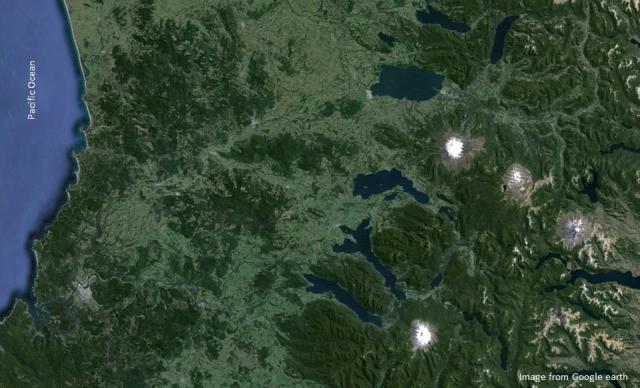Posted 01/16/14
Wildlife and ecosystem function are increasingly threatened by forest fragmentation and land use change in Chile. In a country of mountains, Isabel is focusing in on riparian forests as a means of restoring connectivity and protecting biodiversity. Isabel's primary objectives are to quantify the importance of riparian areas to landscape connectivity and to work with local stakeholders to better protect riparian forest areas.
Forest fragmentation and land use change is a worldwide problem with no easy solution. In her PhD work, Isabel Rojas-Viada will conduct research in her home country of Chile with the goal of finding a workable balance between sustainable agriculture, protecting forests, and maintaining landscape connectivity by focusing on riparian forests.Chile is a land of mountains. Mountains influence everything that the people do from agricultural practices to recreation activities. The steep topography makes a lot of the country unsuitable for agriculture, which is a reason that many of the montane forests have survived to the present day. However, like other mountainous regions, the valleys and riparian areas have been subject to intense changes in land use such as conversion to row cropping, grazing, and plantations of pine and eucalyptus. The image shows the extensive clearing that has taken place in the central valley of Chile while the mountains on either side remain largely forested with native forest in the Andes and forest plantation in the Coastal Range (Figure 1).

The loss of riparian forests has many negative effects. These forests are home to a wide range of wildlife, some of which are specialists such as the Spectacled Duck (Speculanas specularis) which has declined in recent years and amphibian species that require riparian areas to complete their life cycle. What little riparian forest remains in riparian areas often serves as an important corridor for movement of wildlife, maintaining connectivity between larger patches of montane forest. Many of the animals that live in mountain areas during the warmer summer months also need the riparian forests when they move to lower elevations during the winter. In addition, riparian forests provide important ecosystem services such as control of erosion and reduction of runoff that degrades local water quality Isabel has two primary research objectives. First, she will focus on documenting the importance of riparian forests by quantifying the proportion of potential connectivity they provide at the country-wide scale. Then she will examine different potential future scenarios based on stakeholder’s experiences and needs to examine potential alternative states of connectivity, and the potential effect of riparian forest management in maintaining connectivity for wildlife. Second, Isabel hopes to encourage long-term participation by stakeholders such as local governments, NGOs, landowners, and local citizens in designing conservation strategies that can balance the uses of riparian forest for agriculture and recreation with the need to protect wildlife and ecosystem connectivity in the face of such threats as habitat loss, invasive species, and global climate change. In summary, Isabel’s overall goal is to better understand, protect, and expand riparian areas through increased knowledge and outreach. The results of her research will help us conserve wildlife, protect soil and water quality, and improve opportunities for recreation and local appreciation of riparian forests, as well as provide a strategy for balancing land use change and forest fragmentation worldwide. Buena suerte, Isabel!“
Story by Schilke, Paul
